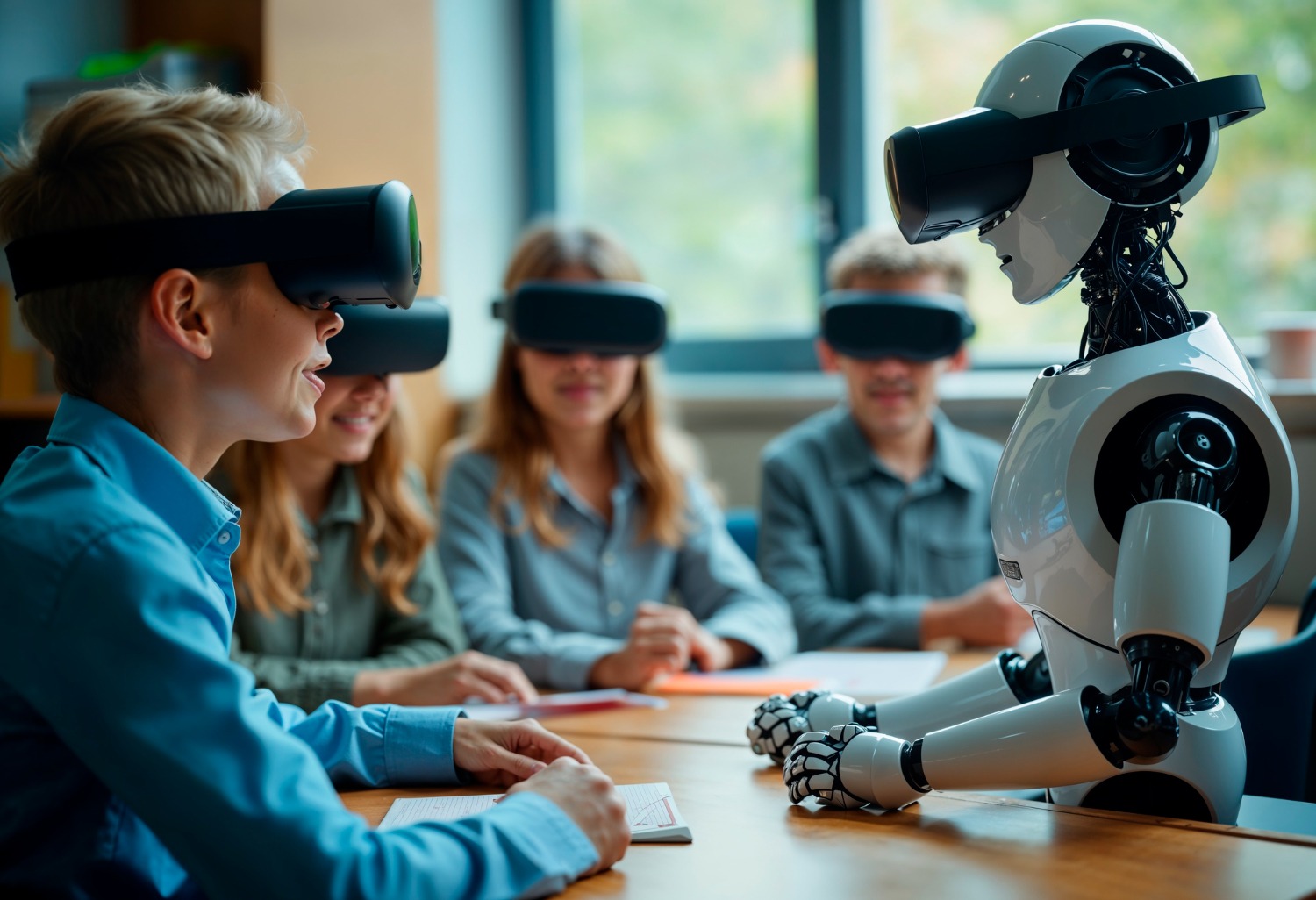How EdTech is Transforming the Learning Experience
The education landscape is undergoing a revolutionary transformation, driven by advancements in educational technology (EdTech). From personalized learning experiences to enhanced classroom engagement, EdTech is reshaping how students learn and educators teach.
By leveraging digital tools, software, and platforms, EdTech bridges gaps in traditional education and paves the way for a more accessible, inclusive, and engaging learning experience. In this article, we’ll explore how EdTech is transforming education, the benefits it offers, and the challenges it presents.
1. The Evolution of EdTech
Education has always been influenced by technological advancements, from the invention of the printing press to the introduction of computers in classrooms. However, the recent explosion of digital tools, artificial intelligence, and internet connectivity has significantly accelerated the pace of innovation in education.
EdTech now encompasses a wide range of technologies, including:
- Learning Management Systems (LMS): Platforms like Moodle, Canvas, and Google Classroom help educators manage, deliver, and assess educational content online.
- Gamification Tools: Apps such as Kahoot! and Quizizz engage students through interactive quizzes and games.
- Virtual and Augmented Reality (VR/AR): Technologies like Oculus and Google Expeditions allow students to experience immersive learning, such as virtual field trips or 3D science experiments.
- AI-Powered Tutors: Tools like Khan Academy and Duolingo provide personalized learning pathways based on individual student needs.
This evolution has fundamentally changed the way education is delivered, moving beyond physical classrooms to virtual and hybrid environments.
2. Personalized Learning: Meeting Students Where They Are
One of the most significant ways EdTech is transforming education is through personalized learning. Unlike traditional classrooms, where all students follow the same pace and curriculum, EdTech enables tailored learning experiences based on individual strengths, weaknesses, and learning styles.
For example, adaptive learning platforms like DreamBox or Smart Sparrow use algorithms to assess a student’s progress and adjust content accordingly. If a student struggles with a specific concept, the platform provides additional resources or exercises to reinforce understanding. Conversely, advanced students can move ahead at their own pace, avoiding boredom and fostering engagement.
This personalized approach ensures that students receive the support they need, reducing the one-size-fits-all limitations of traditional education.
3. Engagement Through Interactivity and Gamification
Keeping students engaged is a constant challenge for educators, particularly in a digital-first world. EdTech addresses this issue by incorporating interactivity and gamification into the learning process.
Gamification tools turn learning into a game-like experience by introducing rewards, badges, and leaderboards. For instance, language learning platforms like Duolingo use points systems to motivate users to complete lessons. Similarly, apps like Classcraft turn classroom management into a role-playing game, encouraging teamwork and participation.
Interactive whiteboards, digital simulations, and AR/VR experiences further captivate students. Imagine a history lesson where students virtually walk through ancient Rome or a biology class where they explore the human body in 3D. These immersive experiences make abstract concepts tangible and memorable.
4. Accessibility and Inclusion: Bridging the Education Gap
EdTech is also a powerful tool for making education more accessible and inclusive. Students with disabilities or those in underserved communities often face barriers to traditional education. EdTech helps overcome these obstacles by providing flexible, adaptable solutions.
For instance:
- Text-to-Speech and Speech-to-Text Tools: These technologies help students with visual or learning disabilities access content and express their ideas.
- Subtitles and Translation Features: Platforms like YouTube and Microsoft Teams include real-time subtitles, enabling non-native speakers or students with hearing impairments to follow along.
- Remote Learning: Tools like Zoom, Google Meet, and Microsoft Teams allow students in remote or rural areas to attend classes and interact with educators from anywhere in the world.
By leveling the playing field, EdTech ensures that all students, regardless of their background or abilities, have access to quality education.
5. Preparing Students for the Future
In today’s rapidly changing world, students need more than just theoretical knowledge—they need skills that prepare them for future careers. EdTech equips students with the digital literacy and critical thinking skills they’ll need to thrive in a technology-driven workforce.
Coding platforms like Scratch and Code.org introduce programming concepts to young learners, while tools like Canva teach design and creativity. Additionally, collaborative platforms like Slack and Trello mimic workplace environments, helping students develop teamwork and project management skills.
These tools prepare students not just for exams, but for lifelong learning and career success.

6. Challenges of EdTech Integration
While EdTech offers numerous benefits, it is not without challenges:
- Digital Divide: Not all students have access to reliable internet or devices, creating disparities in learning opportunities.
- Cost: High-quality EdTech solutions can be expensive, making them inaccessible to some schools or families.
- Teacher Training: Educators need proper training to effectively integrate EdTech into their teaching methods. Without this, even the best tools may go underutilized.
- Over-reliance on Technology: Excessive screen time and dependency on digital tools can impact students’ health and critical thinking abilities.
Addressing these challenges requires collaboration between policymakers, educators, and technology providers to ensure that EdTech benefits all learners.
7. The Future of EdTech
As technology continues to advance, the future of EdTech looks promising. Artificial intelligence will further personalize learning experiences, while blockchain technology could revolutionize credentialing and academic records. Moreover, advancements in AR/VR could make virtual classrooms indistinguishable from real-world environments.
The rise of microlearning—delivering content in short, focused segments—will cater to busy learners, while data analytics will empower educators to make informed decisions about teaching strategies and student progress.
8. Conclusion
EdTech is transforming education in profound ways, making learning more personalized, engaging, and accessible than ever before. By embracing these innovations, educators can empower students to reach their full potential and prepare them for the challenges of tomorrow. However, to maximize its impact, stakeholders must address the barriers to EdTech adoption and ensure its benefits are shared equitably.
As we look ahead, the integration of EdTech into education will not just enhance how we learn—it will redefine what it means to be a learner in the 21st century.




